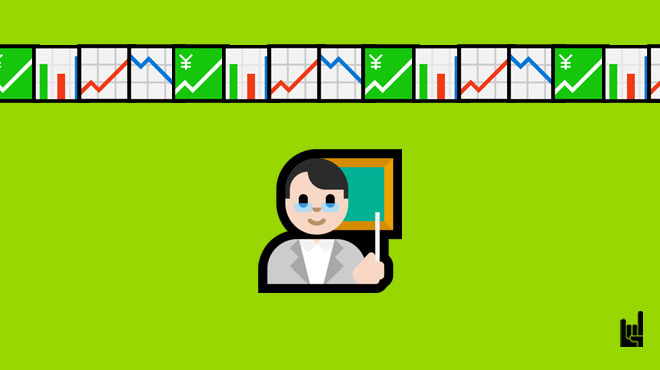In this post, we’ll look at a highly effective technique that makes it simple to sell, namely the value ladder.
With no further ado, let’s take a look at what the value ladder is, and how you can apply it – with examples.
What is a Value Ladder?
A value ladder, also known as a sales ladder, is a method through which you offer your product/ service in ascending order of value and price.
Accordingly, you start with the cheapest product/ service and then work your way up to your most expensive one.
This is a great tactic not only for acquiring new customers but also for keeping them.
Why Use a Value Ladder?
A value ladder is a highly effective marketing tool. Here’s how it works in practice.
Say, for example, that you are selling a training program and you are giving away an eBook. Many people will take up the offer because it’s free. Then, you’ll send the eBook and also an offer for the next product on the tier. This might be an eBook on a related subject. Only this time you will charge $5 for it.
If the client decides to purchase it, you’ll offer them the next product. Perhaps this time it’s a bundle of eBooks for $15. You’ll keep repeating these steps until the client declines an offer, or you’ve sold your premium item. In this case, it could be a subscription.
Even if your client doesn’t make it all the way to the end of the tier, you’ve made more sales than you would have if you’d tried to sell the course outright. Let’s say that your client decides to stop at the bundle of eBooks. You’ve just made $15 that otherwise you wouldn’t.

So, the ladder will look something like this: free offer–> purchase –> cheap offer –> purchase –> more expensive offer –> purchase, etc.
Why is a Value Ladder Effective?
A value ladder is effective because you’re offering the customer a great deal to start off with.
That gets your foot in the door.
By increasing the value of the offering incrementally, you’re avoiding sticker shock. Say, for example, that your premium product is an online growth hacking course costing $495.
Without a value ladder, this is what might happen:
- Client buys low-value or free offer
- You offer them a course costing $495
- Client decline
What the client finds problematic here is huge leap in price. Someone who’s signing up for a free or low-value offer is not necessarily in the market to spend a wad of cash. Hit them with the $495 offer, and they’ll head for the hills.
That said, you’ve got no idea of how much the person might be willing to spend. They might have $10 or $10,000 in their accounts. This is where the value ladder comes in. With a value ladder in place, you’re providing increasing levels of value.
The person with $10 in his bank account might just buy the related eBook. The person with the $10,000 in the bank could possibly buy your premium item and many other items along the way.
By providing them with the eBook for free, they get an idea of the quality of your products. They might also feel a little indebted to you. After all, you gave them a great book for free. The better the value of the initial offer, the more likely they are to consider the next offer in the tier.
Value Ladder vs NO Value Ladder (example)
Let’s look at an example of a value ladder in action.
In this example, you are selling light bulbs (it’s not a fancy title but it’s an honest job). And in the electronics store enter three clients. They’ve come in to get the outstanding deal on light bulbs, as you’re selling them at a cost price to lure people into the shop. Here’s how this scenario can develop –
Without a value ladder:
- Client A just has the $5 for a bulb.
- Client B has $40 with him. He’s here to get the globes too. Let’s assume that he spends $20 in your store.
- Client C has $200. He’s well able to afford your premium smart bulbs priced at $50.
Overall, you’ve received $75. That sounds good, but you’re leaving a lot of money on the table.
With a value ladder:
- Client A purchases the bulb; he hasn’t got money for anything else. He still spends $5.
- Client B has his $40. He comes in to buy the bulbs, but you upsell a light dimming switch. He spends $40 in total.
- Client C comes into the store to check out the $5 globe. You upsell the light dimming switch. Let’s say that it costs $10. You then speak to him about smart globes at $50. Then, you tell him about other smart items to complement his purchase. Finally, you offer him a smart home hub. All in all, he’s now spent all $200.
Overall, you’ve received $245. Now, that’s a lot better!
Of course, this is an ideal scenario and we aren’t living in an ideal world. But the same rules apply in our world, too, and can turn something “good” into “better”.
Structuring Your Value Ladder Correctly
To be successful here, you have to structure your ladder correctly. In the examples above, we assumed that the ladder was perfectly designed. In reality, it’s not quite that simple. What you need is to create a series of offers that logically follow one from another.
Here’s how to get started.
Your Low-Value Offer
Finding the perfect low-value offer can be challenging.
If possible, make your first offer free. Make sure that you choose a valuable product here and try to make the offer as enticing as possible.
Tier Two
You make a Tier Two offer. If your free deal was that good, how much better is the $5 deal you’re proposing now? Having seen the value of your first offer, they know they’re getting great value with the $5 deal. And they’ll probably reason that $5 is not that much in the grand scheme of things.
Keeping the Momentum Going
In the early stages, you might sell items at cost or even at a loss. However, this is worthwhile because your client won’t get that deal anywhere else. As you step up the ladder, you can increase your profit margins to cover those initial costs.
What if They Stop at Tier Two?
That’s a little disappointing, but all is not lost. By offering them the next tier up, you’ve planted the seed in their mind. They are likely to think about it more when they get home. You’ve probably made a good impression on them because you offered such great deals to start off with.
Value Ladder Examples to Inspire You
Here are some value ladder examples, drawn from the real world.
A Personal Trainer
- Free training session
- The client signs up for a month of training
- You offer them a nutrition plan
- They sign up for a year’s training at a great rate
- You then sell them a fitness retreat package
A Cybersecurity Business
- Start with a free trial
- Graduate to a basic paid plan
- Offer a great deal on your business software package
- Recommend plugins
- Offer a full system security audit to identify holes in the company’s cybersecurity
- Offer security awareness training to help employees recognize common tricks that hackers use to implant malware
Value Ladder – Conclusion
Indeed, the value ladder tactic may not sound as fancy and hip as growth hacking. However, that doesn’t mean that the value ladder itself can’t bring value to your business.
The truth is that a well-thought-out value ladder can make upselling a lot simpler.
From the Big 5 Tech to smaller companies, many kinds of businesses can benefit from the value ladder method.
The value ladder tactic makes more sense for specific business models and industries and less sense for others.
You should try for yourself to see what works and what doesn’t.

I write for GrowthRocks, one of the top growth hacking agencies. For some mysterious reason, I write on the internet yet I’m not a vegan, I don’t do yoga and I don’t drink smoothies.




One Response
Nicolas,
I have to chew on this idea of a value ladder. I am thinking of introducing the option, “pay me that you want” in silver, as the first step. I got inspired by Adrian Miller’s site. Hat tip to Ramon Ray.